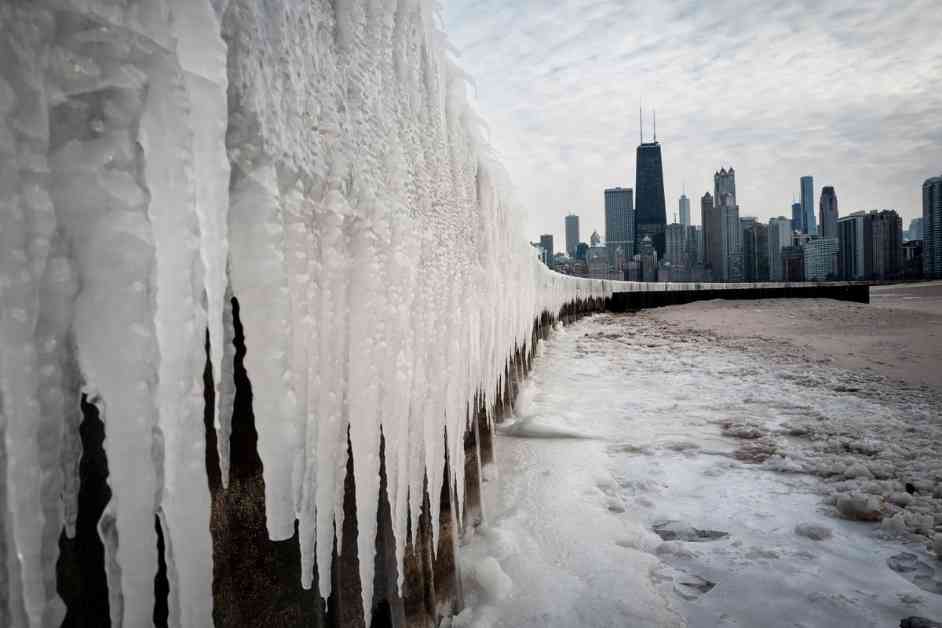Extreme Temperature Swings Across the United States: A Meteorological Rollercoaster
In a matter of days, the United States experienced a dramatic shift in temperatures, with some regions plunging into bone-chilling lows before soaring to unseasonable highs. From the frigid –30s and –40s Fahrenheit to the balmy 60s and 70s Fahrenheit, the weather rollercoaster left many residents bewildered and reaching for their winter coats one day, only to dig out their shorts and T-shirts the next.
Last week, eastern Nebraska was gripped by an Arctic blast that brought freezing temperatures in the –30s Fahrenheit and wind chills that plummeted to the –60s Fahrenheit. The extreme cold forced schools to shut their doors as residents braced themselves against the biting chill. However, as quickly as the polar vortex descended, it receded, making way for a surprising heatwave that swept through the region.
Van DeWald, a lead meteorologist at the National Weather Service’s office in Omaha, recounted a surreal experience, saying, “I walked around the lake, and it was 57 degrees [F], and people were in shorts and T-shirts.” This abrupt change in weather patterns, with temperatures swinging by as much as 100 degrees Fahrenheit in a matter of days, left many scratching their heads and shedding their winter layers with haste.
### The Polar Plunge: Record-breaking Cold Grips the Nation
The sudden deep freeze that gripped the central and eastern United States was attributed to a mass of frigid air that traveled southward from Canada, bringing with it bone-chilling temperatures and fierce winds. Daily temperature records were shattered as cities like Bismarck, North Dakota, and Minot, North Dakota, recorded historically low temperatures of –39 degrees F and –33 degrees F, respectively. These icy conditions, with temperatures plummeting 30 to 40 degrees F below normal, were not uncommon for the High Plains region, where extreme Arctic air outbreaks are known to occur every couple of years.
Matthew Johnson, a meteorologist at the NWS’s Bismarck office, shed light on the severity of the cold snap, stating, “That happens every one to two years, that we get that cold.” The bone-chilling temperatures and icy conditions brought life to a standstill, as residents hunkered down and braced themselves against the relentless cold. Schools remained closed, and emergency services were on high alert as the region endured the harsh grip of winter.
### The Meteorological See-Saw: From Deep Freeze to Heatwave
As quickly as the Arctic blast descended, a swift change in weather patterns ushered in a wave of warmth, with temperatures soaring into the 60s and even the 70s Fahrenheit. Brian Hurley, a senior meteorologist at the NWS’s Weather Prediction Center, explained that this meteorological pendulum swing was a result of shifting air patterns higher in the atmosphere. The retreat of a region of lower pressure that had brought frigid winds from the northwest allowed warmer air to flow in from the south and southwest, bringing with it a much-needed reprieve from the bitter cold.
Despite the drastic temperature swings that left many residents bewildered, meteorologists reassured the public that these fluctuations were not entirely unexpected during this transitional period between winter and spring. Matthew Johnson noted, “We can kind of fluctuate pretty violently during this transition season,” emphasizing that as meteorological spring approached, weather patterns became more erratic and changeable, setting the stage for the dramatic shifts in temperature that were witnessed across the nation.
As the United States navigates the unpredictable whims of Mother Nature, residents are reminded of the resilience required to weather the storm, both literally and figuratively. From bundling up against the icy chill to basking in the unseasonable warmth, the meteorological rollercoaster serves as a poignant reminder of the ever-changing tapestry of nature and the awe-inspiring power of the elements.










